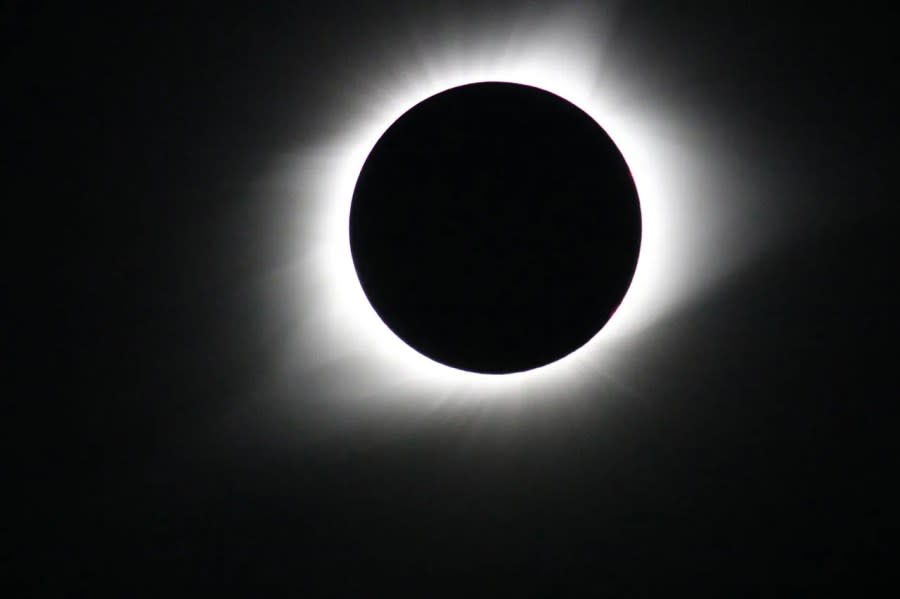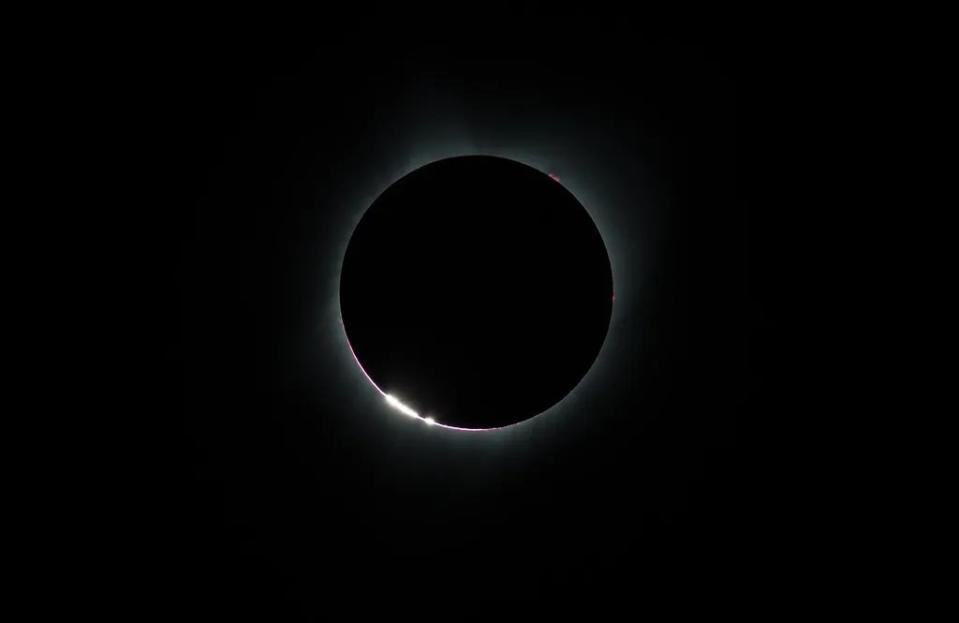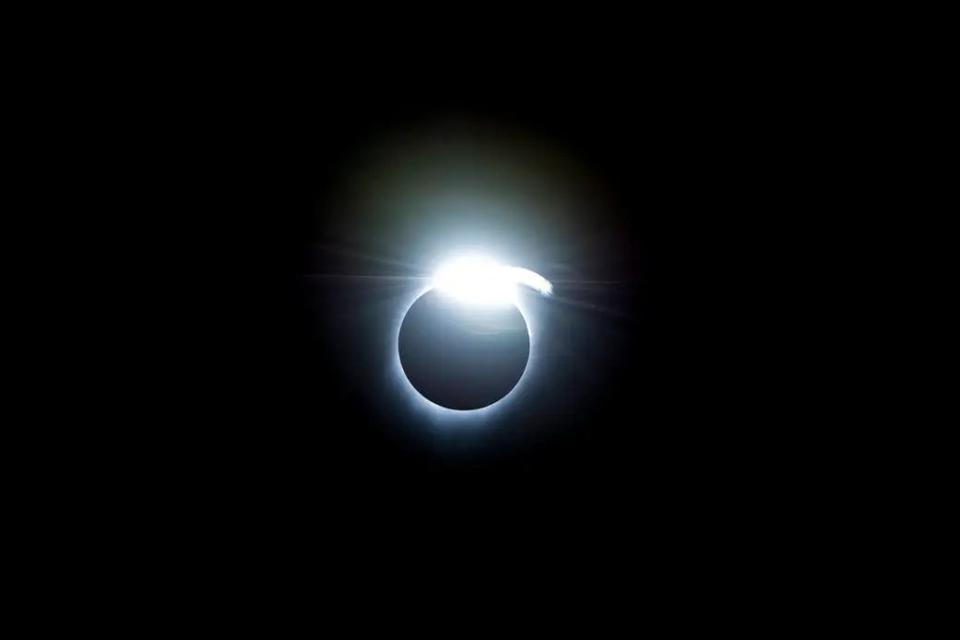3 things to look for during the total solar eclipse other than totality
TAMPA, Fla. (WFLA) —By now, you probably know that I’m unreasonably excited about the upcoming total solar eclipse on April 8, and I think you should definitely make an effort to travel to the path of totality. Also, not all cities in the path of totality guarantee a great view, if it’s cloudy that day, you’ll miss out completely—so choose your city wisely.
How to tell if eclipse glasses are safe
If you are going and you’ve chosen your city to travel to within the path of totality, it’s time to get excited about what we’ll get to see during the total solar eclipse! We’ll start with the corona of the sun. The moon will completely block out the sun except for the corona. We’ll see the fiery tongues of light dancing around the moon. It’s the only chance we have to actually view the corona of the sun with the naked eye.

Credit: NASA/Nat Gopalswamy
Shadow Bands
Other really cool things to look for during the total solar eclipse includes shadow bands. This occurs just before and just after the time of totality. They look like fast-moving dark bands that are separated by white or lighter spaces. Look for them racing across sides of buildings or flat ground. They are faint and fast-moving, so difficult to capture in a photo or video.
Bailey’s Beads
You’ll also want to keep an eye out for Bailey’s Beads, which occurs right as the moon is making it’s way completely over the sun. The surface of the moon is not smooth—there are mountains and craters. A bit more light escapes past the moon in the craters than the mountains, creating a slightly brighter pulse of light- sometimes strung together resembling a necklace. They are VERY short-lived, so only the most observant eclipse viewers will catch them.

Credit: NASA/Aubrey Gemignani
Diamond Ring Effect
Right before we enter totality and right as we exit totality, you will get to see the diamond ring effect. First, most of Bailey’s Beads will disappear, leaving only a singular brighter spot. this brighter spot on the thin circle of light surrounding the moon will resemble a solitaire diamond ring—this is the last phenomenon before totality. It also occurs right as totality ends.

Credit: NASA/Carla Thomas
And finally, the experts from Solar Eyeglasses add that wearing red or green can enhance your eclipse viewing experience:
“Day to Night Vision: In normal daylight, our eyes use the “cone cells” of the retina to see colors clearly. These cells function best under bright light conditions (that’s called photopic vision).
But as it gets darker, our eyes switch to “rod cells,” which are better for low light conditions (scotopic vision). These cells are not so great with colors; they just pick up blue-green hues well.
Mesopic Zone Where the Solar Eclipse Magic Happens: Four to five minutes before the eclipse becomes total, we’re in the intermediate phase called the mesopic vision zone— where it’s not too bright, not too dark, but the surroundings look less colorful. They rather turn grayish or silvery.
Astronomer: ‘Why I won’t drive during the eclipse’
The light levels in this zone fall enough that the cone cells receive less stimulation. This leads to a decrease in the vibrancy or saturation of colors we see as they pick the gray overtone of the surroundings.
This is especially noticeable with warm colors like red and orange.
But green? It is going to pop and look brighter against the dimming surroundings. All thanks to the Purkinje effect, a cool natural phenomenon that changes how we perceive colors in low light.
So, whether you’re snapping pics, chasing shadow bands, or just enjoying the view, your red and green outfits will not only enhance the experience but also give your photos a unique, vivid splash against the eclipse’s backdrop.
To add to this, their spokesperson said: “This isn’t just an eclipse thing. It’s similar to how we observe garden flowers in the evening. Reds turn darker, almost black, while blues and greens get brighter.”
They added: “This Purkinje effect during the coming eclipse will turn the whole experience from just watching the sky go dark to a real-life science demo on your clothes! But to really see the changes in color saturation, lots of people need to wear these complimentary red and green colors. Two or five in a group of 100 wouldn’t help.” –Solar Eyeglasses
Interested in learning more about the Purkinje effect and the eclipse? Here’s a detailed video from Dr Gordon Telepun.
For the latest news, weather, sports, and streaming video, head to WFLA.

